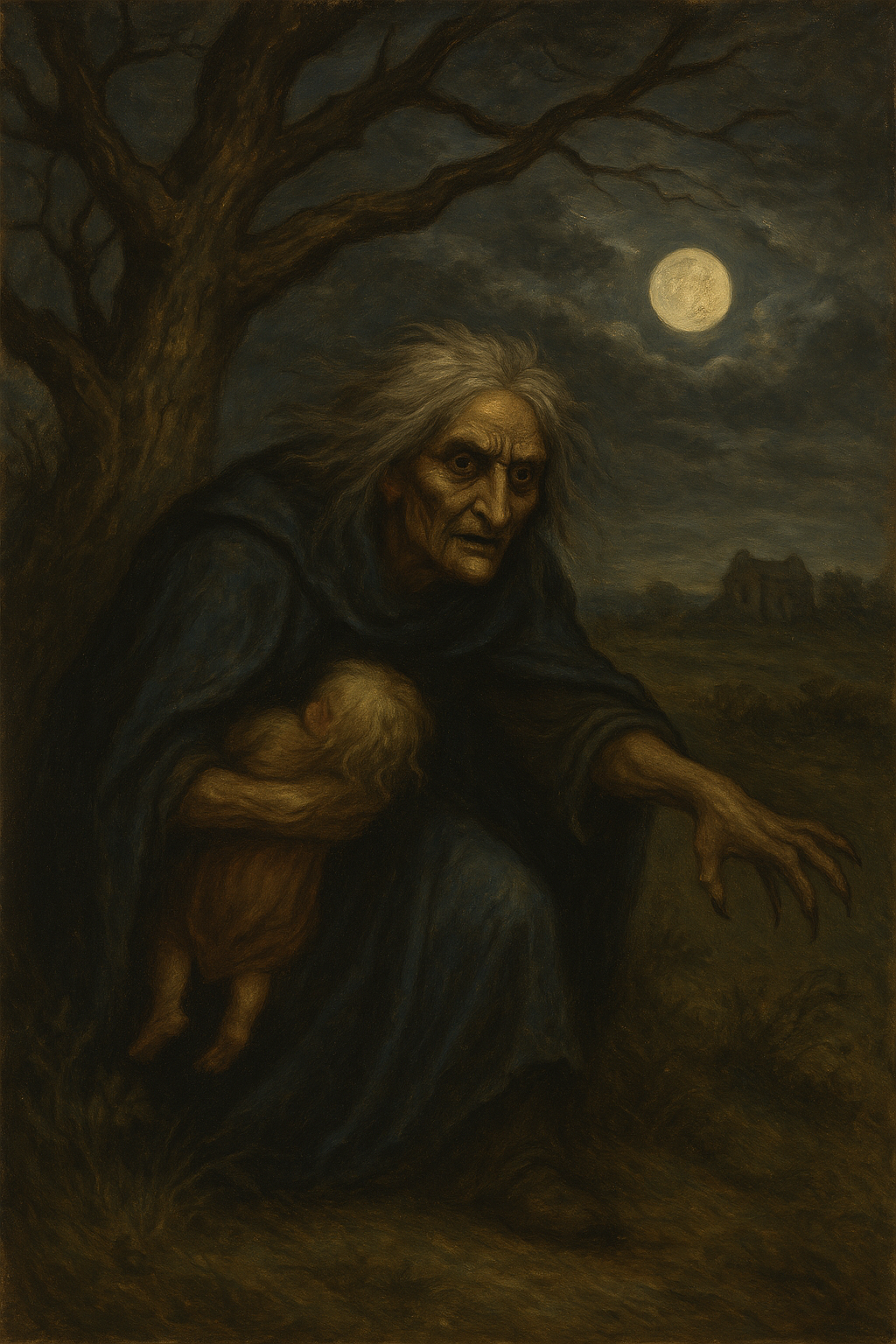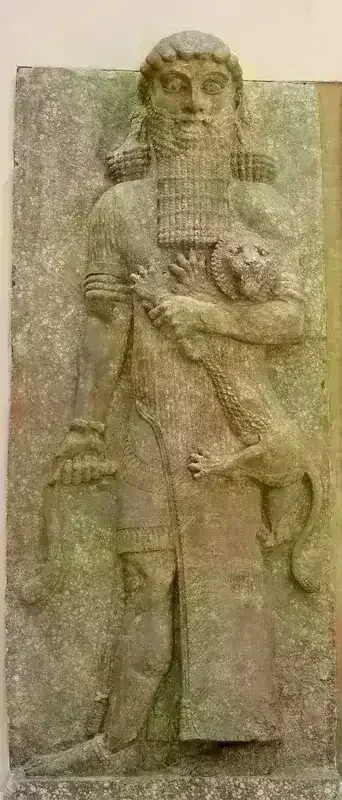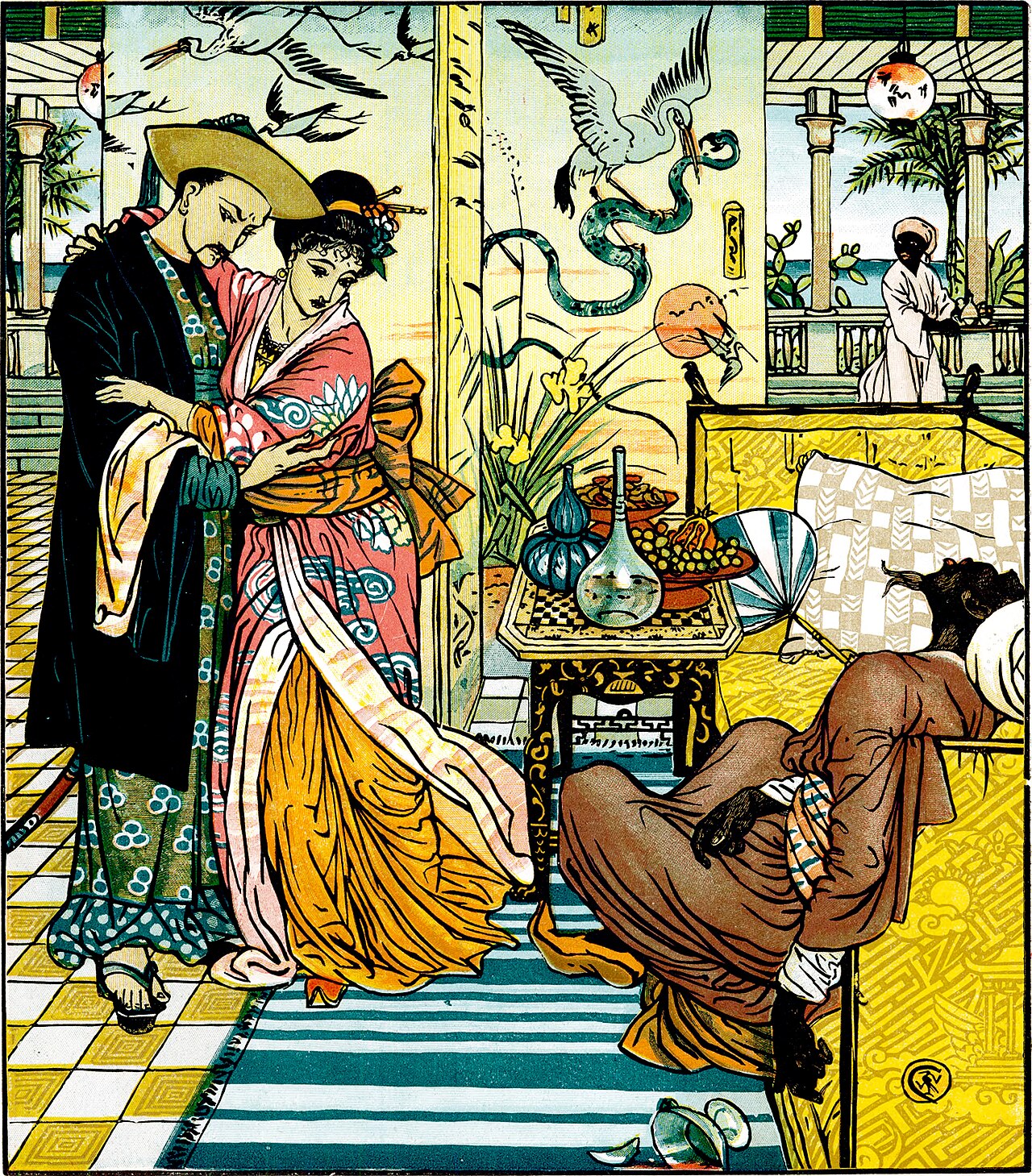Black Annis

Black Annis, also known as Black Agnes or Black Anna, is a fearsome figure from English folklore. Described as a blue-faced hag with iron claws and a hunger for human flesh—particularly that of children—she is said to haunt the countryside around Leicestershire. Her home is believed to be a cave in the Dane Hills, with a large oak tree standing at its entrance.
According to legend, Black Annis emerges at night in search of victims, especially young children and lambs. After devouring them, she would hang their flayed skins on her oak tree to dry, before wearing them around her waist. She was also known to reach through open windows to snatch people from their homes. Folklore claims she carved her cave herself, using her claws to dig into the sandstone cliff. This cave became known as Black Annis’ Bower Close. Parents often invoked her name as a warning to misbehaving children. Some stories even tell of her hiding in the tree’s branches, ready to leap on unsuspecting prey.
In other versions of the tale, the sound of Black Annis grinding her teeth could be heard across the hills, giving people enough time to lock their doors and shutter their windows. Cottages in the area were supposedly built with very small windows, just large enough for only one of her arms to reach inside. When she howled, her cry could carry for five miles, and people would stretch animal skins across their windows and hang protective herbs to keep her away.
The earliest known written reference to Black Annis appears in an eighteenth-century title deed referring to a piece of land as "Black Anny’s Bower Close." Two such deeds, dated May 13 and 14, 1764, are mentioned in the first volume of County Folklore (1895), published by the Folklore Society.
The origins of Black Annis are uncertain and debated. Some, like T. C. Lethbridge, believed she has roots in Celtic mythology, possibly linked to the goddess Danu or Anu. Others suggest connections to Germanic myth, such as the figure of Hel. Donald Alexander Mackenzie, writing in 1917, argued that Black Annis may descend from an ancient mother goddess associated with child sacrifice and seasonal cycles. He drew parallels between her and other mythic figures including Kali from India, the Gaelic Muilearteach and Cailleach Bheare, Demeter of Greece, Labartu of Mesopotamia, and Isis-Hathor or Neith from Egypt. Some have speculated that the legend preserves a distant memory of sacrifices offered to a goddess under sacred oak trees, which often served as ancient meeting places.
In local tradition, Black Annis was also imagined as a monstrous cat. A springtime ritual once marked the end of winter with a symbolic drag hunt: a dead cat soaked in aniseed would be dragged from Black Annis’ Bower to the mayor’s residence, followed by a pack of hounds. This event, said to take place on Easter Monday—also called Black Monday—faded out by the close of the 18th century.
Another tale claimed that Black Annis, in her feline form as Cat Anna, lived in the cellars beneath Leicester Castle, with a hidden passage connecting the castle to the Dane Hills, along which she would prowl.
In 1837, her legend was brought to the stage in a play titled Black Anna’s Bower, or the Maniac of the Dane Hills, performed at the Leicester Theatre. In the play, she took on a role not unlike that of the witches in Macbeth, entwined in a plot surrounding the murder of a landlady from the Blue Boar Inn.


